Last year I started a directory of companies that were actively trying to reduce their impact on the planet. It’s by no means complete and I don’t update it as often as I should, but I hoped it would raise awareness and help you make more informed choices about where you shop based on your criteria for what you want and the budget you have.
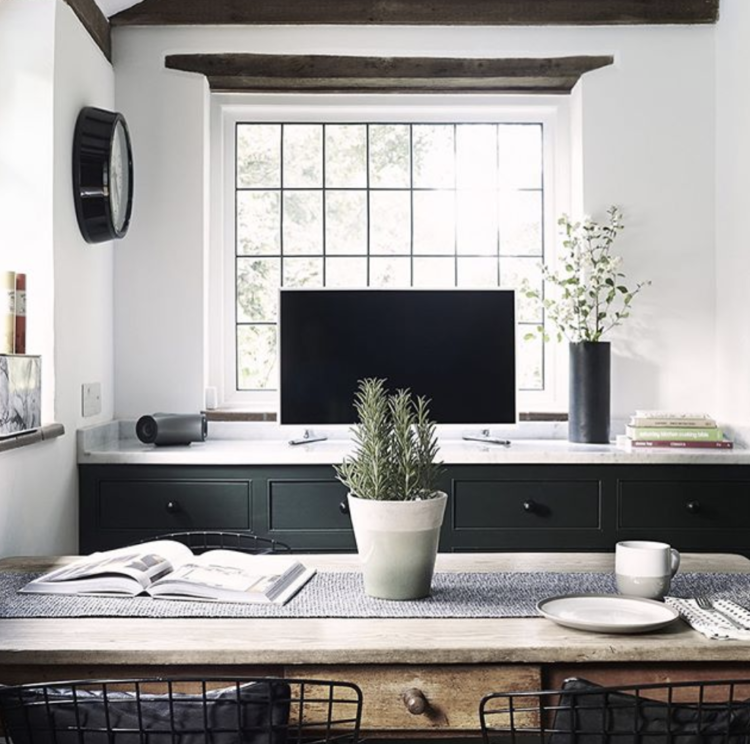
Over the last few days I have considered starting another directory. A resource of BAME interior designers, shops, stylists and photographers. It was as much about offering space on a large platform on which they might get noticed as providing something useful to prospective clients and consumers. It was, in fact, intended to shine a light on an industry in which minorities and people of colour are so under-represented.
But a list felt wrong. Many businesses don’t promote themselves as black-owned, after all. But then many people look at the interior design industry and think it won’t be for them because of the colour of their skin. Busola Evans, the associate editor of Living etc, told me this yesterday:
“The interiors world in the UK is terribly under-represented – the reality is that it is predominately white and middle-class. It’s not unusual for me to be the only black person at an industry event and while I don’t dwell on it, it does sadden me. By not addressing this lack of diversity, the industry is losing out on great talent, a variety of viewpoints and different design perspectives which, in the long-term, everyone can benefit from.
“It’s always important to do some self-analysis as a brand or an individual and last year we recognised at Livingetc that we could do better at reflecting the country we live in. Since then we have been more active in bringing in as many diverse faces and voices to our editorial as possible. It all makes more a much more rounded, inclusive, and yes, ultimately better magazine.
“In my experience, black people in interiors – usually women – often shy away from talking up their skills, experience and businesses. It’s an issue women have in general, but can be magnified when you throw the racial element into the mix. So it is great to give an opportunity for them to champion their work. I hope the general sea-change and the increased awareness of the importance of equality will open more doors and make clear that black people are just as worthy of their place in this industry.”
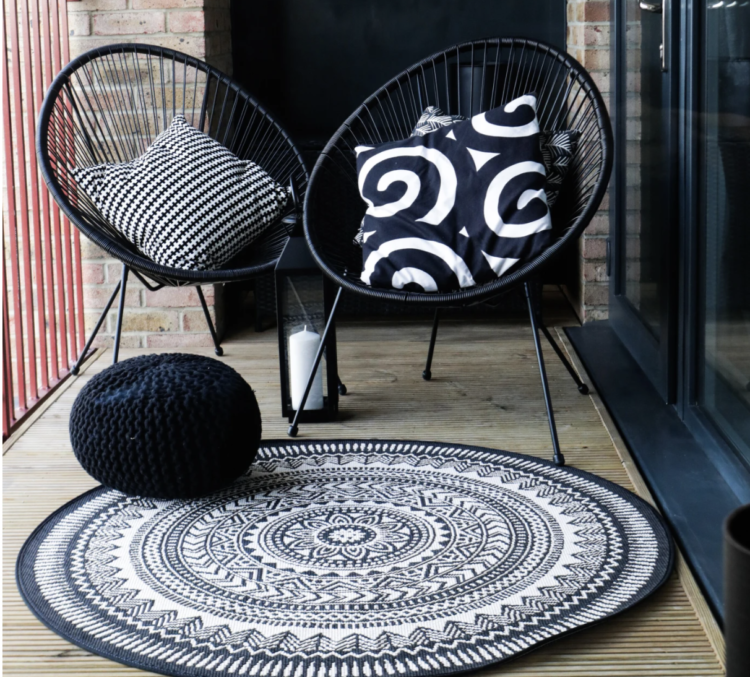
Interior designer Charmaine White, of The White House Interiors, told me yesterday: “I have never promoted myself as a black-owned business; as far as I am concerned I am a designer. But going to trade shows and industry events you never see Black or BAME faces. To the point where I have wondered if they even exist or it was just me.
“It has played on my mind although I have never had a bad experience. In the US there is the Black Interior Designers Network and I have wondered if we should have something like that here. And then I think, why should we have to be separate? Maybe the BIID (British Institute of Interior Designers) should set up a BIDN as a branch of their organisation?”
Articles on the popular and influential design website Dezeen have addressed this issue, but the posts are two or three years old, although this from Design Matters might be useful. In researching this post I found a list of 30 Black Interior Designers you should be following on instagram (updated January 2020) but noticed it was posted initially in honour of Black History Month, and that felt wrong too. Why is OK to wait for a specific month to post this list? I’ve been on many lists at many random times of year and no-one felt it needed to be a designated month before they wrote that list, and yes I’m aware that that’s the problem.
One black interior designer told me that the lack of diversity in the industry was something she thought about a lot but didn’t know how to address. Another that she felt it was so deeply woven into society that she wasn’t sure how to begin unravelling it and had decided to just work alongside it.
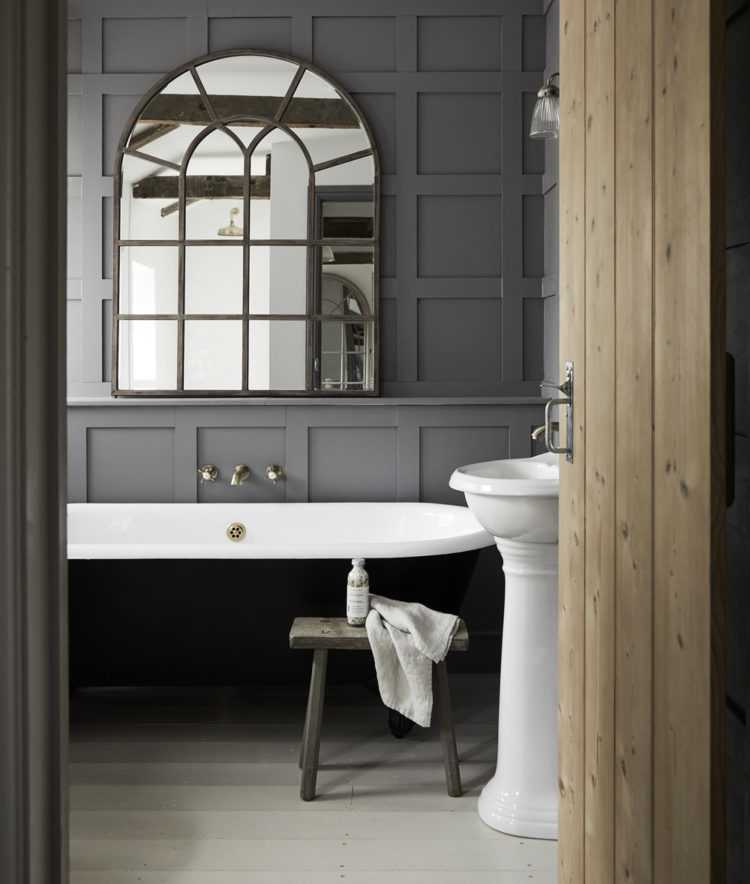
I asked the television presenter and former Editor of Elle Decoration, Michelle Ogundehin (who has also been a guest on the podcast), for her thoughts. And Michelle, a trained architect, who is nothing if not thorough, wrote 2,000 words. And they are all brilliant. It is a fascinating, thought-provoking post and I urge you to read it all. The link is here.
She ponders that to ask why is there not more diversity in interior design is, perhaps, the wrong question. Should we, in fact, be asking how many children of a non-white background do not pursue a career in any industry because they think they won’t succeed/be accepted/fit in? I don’t want to pick paragraphs out of context so please follow her thought process from that starting point for yourselves.
And talking of posts, Tash South also wrote about her experiences growing up in Apartheid South Africa for me and, again, rather than take a quote, I have linked and urge you to read.
Against this background of under-representation what is also clear is that during this pandemic small businesses are suffering. And small black-owned businesses are suffering even more.
So this post is for you to add anyone you know (including yourself) in the comment section who might wish to be linked from a large platform. And hopefully this will give everyone a chance to increase their business and raise their profile should they so wish.
Over on Instagram I have offered my platform to black voices for the rest of the week (starting yesterday). I will do this once a month from now own to voices that are different from my own. Yesterday was Jax @Jazzierere, today is Lucinda @nest_twenty-eight and tomorrow is Paula @hillhousevintage with television presenter Jay Blades @jay_n_co on Saturday.
Vanessa Agyemang, owner of Copperdust London said: “For so long we haven’t been apart of the conversation. Our design and ideas have been ignored. Now is the time for radical change, it is time to use privilege to recognise fellow black designers.”
When it comes to my own sponsorship deals, I tend to prefer to organise long-standing collaborations where I work alone with a brand, but when that is not possible I always ask who else is involved and try to suggest black women and POC be included. However, perhaps since the industry is so under-represented, often those who are approached may feel the brand isn’t right for them, or that they don’t want to be involved on a tokenistic basis. And so the vicious cycle continues.
I would ask, as so many have asked in recent days, that you don’t approach any of the people, brands or organisations I have included here for help on what to read or say or do. It is not up to them to educate us (I speak as a privileged white woman here) so do your own research and read your own books.
The following people gave me permission to include them on this post. Bear in mind that they are not educators or activists, they are people in the interiors space. But if you are looking for more diversity, here are some people you might like to follow.
I am also linking, with permission, to the UK Black Influencers Directory, which has been complied by Tinuke Bernard and published on her eponymous blog. Here is a link to more Black-owned British Businesses via Another Magazine. .
Laura is renovating her Oxfordshire cottage with wallpaper and pattern @nofeaturewalls
Phillip is doing up a Victorian house in Norfolk @bryridge_house
Fawn Interiors is based in Hampshire
Detola and Geek is a homewares store
The People’s Shop in Birmingham sells clothes, homewares and gifts
Oneoffto25 is an online art gallery
Bespoke Binny offers homewares and gifts made from African cloth as well as lampshade making classes (which I have spoken about a few times during the last few weeks).
Copperdust is a homedecor shop selling luxury African interiors and there’s a great blog too.
Sarah Griggs is a photographer at @peas.in.my.pod I have featured her work on these pages before but do get in touch if you need photography.
I have spoken to dozens of people over the last few days. I will add to this list as they come back to me and, as I say, use the comments for raising awareness of other businesses, too. I will add them to the body of the copy from the comments as we go along.
And I will finish with this quote from Jayda Barham, a second-year university student at Bristol and an aspiring interior designer: “During my experiences at university we have gained various opportunities to visit and work with interior design companies. This has opened my eyes on issues across the board.
“It is hard to avoid the fact that there is a lack of diversity and lack of representation for ethnic minorities in the interior design industry. As a young black woman and an up-and-coming designer, I believe that the next generation is crucial in changing this. As a design community, creating a platform like this can be a stepping stone to giving a voice to those who are under-represented and miss opportunities because of the colour of their skin.
“There is an incredible opportunity to learn from this. Diversity enables designers to educate themselves on different cultures round the world that can inspire and influence a design. It’s about collaboration and coming together as designers, no matter your background or the colour of your skin.”


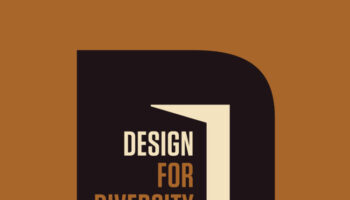
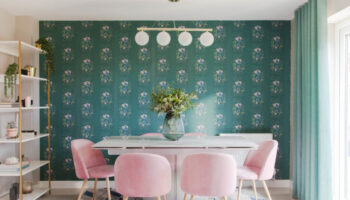



Hi Kate – do you know about https://design-can.com ? I have recently come across it and looks v interesting (and is supported by Yinka Ilori who is amazing).
Yes I was aware of it launching last year. Brilliant initiative.
I think there are a lot of reasons for such a lack of diversity in the interior design industry.And I also agree with your speeches. But I want to share about Idea Art which is one of the leading interior design companies in Dubai.
I don’t really think this is the place for an advertising comment do you?
An inspiring article by Michelle Ogundehin. She will know better than anyone that Interior Design is very much a “who you know” business. Apart from having considerable talent, you have to fit in and there lies the rub.
The world of fashion appears less of a barrier for people who are coloured, and who want a design career.
To my mind little has changed if you are not white, since the 1960’s. Read James Baldwin. Or even better read the moving Ta-Nehisi Coates. Between the World and Me.
Well done Kate, I think this was a brave and necessary article. I think that many of us are feeling our way here, and searching within ourselves for a way forward that feels appropriate and sensitive at this incredibly painful and delicate time.
As a fellow blogger, I know how inappropriate and hollow it feels to try and write the usual articles and carry on with “business as usual” when there are devastating events and important truths that cry out to be acknowledged.
As a white woman one of the most useful things I have learned this last week is to not just listen, but to truly hear what the BAME community is saying to me. If they are saying that they are hurting, and if I am accepting of the system that is causing that hurt, then I am part of the problem even if I don’t consider my personal actions to be so.
Also, that to be non-racist is no longer enough. I am being asked to be actively anti-racist. I believe that we have reached a tipping point in our awareness of this problem (just as last year there was a tipping point in climate crisis awareness). Once we have seen, we cannot unsee. Now we know, we cannot pretend not to know. Staying silent from now on would be an implicit endorsement of the status quo.
What I have heard this last week is that I am needed to be vocal and to act, not just hope for change. For myself, I know I will make many mistakes but am committed to listening, hearing and learning. And then taking action and speaking out, just like the boy in Michelle Ogundehin’s article: “ He stood up. He said something. He didn’t hesitate”. Many of us have hesitated until now, for a myriad of reasons. But from now on, we choose to stand up and say something.
Just as you have done today, Kate. Keep up the good work, and thank you.
Thanks for this post, Kate! I’ve long felt the interiors world is a predominantly white (middle class, female) space, particularly online. It’s great to see this issue being addressed and discussed, particularly by a non-BAME interiors figure, and I appreciate your efforts to help BAME individuals get the exposure they’re long overdue x
Being ‘colour blind’ is part of white privilege I won’t follow anyone just because of their skin colour, but structural inequalities mean we don’t even get to see so much amazing talent -so thank you for this, Kate.
Also, as the white mother of a visually creative black child, I’m really aware of how important it is for her to see people like her represented in all walks. If she can see it, she can be it.
Isn’t it a bit too late for that? The same goes for environment concerns. Interior design, as an industry, has long been characterised by conspicuous consumption, disregarding in the process the reliance on cheap labour, very often from very disadvantaged backgrounds, and the damage to the environment.
Thank you so much for this post Kate. I have been a fan and follower of yours for a long time so seeing your voice contributing to the conversation is much appreciated. I noticed a comment regarding why would you highlight black Interior designers and people in the interior space due to the colour of their skin. Racial inequality is systemic in the United States and tons of other countries and is not an issue that will just sort itself out. Black people have had to fight that much harder to to be seen and understood and to see their faces represented and I think that is something that a lot of people very much take for granted. I am actually a black American that grew up in Louisiana but now living in the United Kingdom and experiencing the feeling of racial inequality is not something that is easy to explain to people that don’t know what that feels like, and unfortunately some people don’t care to understand. I can’t tell you how good it feels to get the feeling that you fit in and while I don’t want to speak for Kate, I believe that is what she and other people are trying to do by highlighting black faces in interior spaces. So yes Kate, thank you for jumping on the “bandwagon” because even if some don’t see or acknowledge that underrepresentation, it exist.
Sorry Kate but you lost me here. I am a “politically incorrect” person by not acknowledging the labels of this era because I don’t believe in them. I wasn’t brought up to place people in boxes and I didn’t bring up my children to do so either.
I am frankly disappointed that you jumped on the bandwagon. What happened was a terrible injustice which all people of goodwill agree on. The shock and anger are justified and the global demand for justice was satisfied today. This is good.
But now putting out a list of black interior designers, really? Who in their right mind gives a damn about the color of skin of the person whose work is displayed in digital media, magazines, trade shows, etc.? Are we admiring the work which came from the brain of a designer whose ethnicity, religion or sexuality are irrelevant or are we choosing a designer somehow based on those three criteria? What possible relevance do they have? Someone enlighten me, please!
The interior design industry should be celebrating TALENT, not making lists of skin color. Doing so contributes to creating more boxes and God knows we have enough of those.
I think this is a really difficult situation, it seems as though no one can do right. If you mention BAME people at the moment, as Kate has done here, you are accused of tokenism or jumping on the bandwagon. If you say nothing, you are perpetuating a cycle of underrepresentation. Giving people of BAME origin a little space on a platform that has traditionally been difficult to infiltrate shouldn’t have to be a specific action or blog post or list. In an ideal world, as you say, people would be recognised for their talent, not because they tick the box. However, this is not a perfect world.
Hm, you could have spent the time writing that to instead check out the work of the talented people Kate has given you the opportunity to celebrate. Have you heard of their work before? That may – in some small part – be because of a tilt or bias that you or I are not aware of. A ‘frankly my dear I don’t give a damn’ comment right now is tone deaf and unhelpful.
Kate, thanks for a thoughtful piece nd Phillip, your shark’s mouth chair is brilliant!
So nice and useful Blog. It is good example for me as well. I am following about interior design and new trends for my blog and for new ideas. We are also start to create blog posts about furniture, interior and home improvements. ZedHouses will get inspired from you. Thanks.
Monica then ignore the post; it is interesting that you were so enraged by the concept of non white designers being highlighted that you just had to speak out. If you feel strongly that everyone in the post is without talent then don’t worry no one will hire them.
I am thrilled that you don’t see colour as relevant, unfortunately broader society does not operate on this basis.
Well said Kate!
Sorry that I am obliged to re-address some of the issues that my post provoked. Actually quite disturbing that some of the comments were so aggressive. In no way, shape, or form am I “enraged” or do I feel that “everyone in the post is without talent”! As a matter of fact, I am quite familiar with many of the names that Kate has mentioned and I have followed a few of them for a while. Michelle Ogundehin, for one, is a lovely individual and her design work speaks volumes about her immense talent. I read her article which Kate highlighted and it is absolutely magnificent. She is able to articulate many ideas with which I completely agree. Sarah Griggs is another person whose work I consider personally inspiring.
I do not believe that being color blind is “white privilege”, another buzzword of the times. I am beginning to believe that my perception of the world is generational. Being a 65-year old American woman living abroad for the past 35 years and married to a European man has certainly given me privilege in the sense of being able to interact directly with many cultures, including those of “color”. My own ancestors were Mexican so I cannot be accused of being a “white privileged” outright racist, which is the insinuation of some of the posts I read.
My point is that we all have value, all of us, regardless of our color and I don’t believe that we should have to call out one another based on criteria which to me are irrelevant, particularly in the interior design space which is what we are talking about. Is that the way the world works? I wish. But in my own little life, where faith and family are my focus, it is how I operate and it has served me well.
Sending nothing but good wishes to all….
Monica, I hope and pray that you will open your heart and take a look at the links offered in Kate’s post. I’m in awe. A whole new world has opened up for me. My instagram page has been transformed. This started for me yesterday when I began following more than 30 chefs of color via Samin Nosrat’s page @ciaosamin. I grew up in a predominantly African American city — Washington, DC. I have been following design and food blogs for a long time. I had blinders on. I had no idea of the richness that was available to me. Sad for me. Tragic for those whose talents have been marginalized for so long.
I totaly agree !!!
Couldn’t agree more Monica. A style is either liked or not, it has nothing to do with the designers creed or colour. It’s a personal choice. Interior design seems to be incredibly difficult to break into, regardless of who you are, even more so if you’re a woman over the age of fifty. And no one is positively discriminating for us. At the end of the day discrimination is discrimination, there can never be anything positive about it. But talent is what enables success.
Well said Monica, here and in your follow up post. I was frankly appalled reading this page. Let’s just put a sticky plaster on a cancerous growth then we can all pat ourselves on the back and our consciences are salved. Positive discrimination rarely does anything but patronise. If there has been bias in your promotion of designers or whatever is relevant in your life, to date then ask yourself why.
Everyone should examine their consciences. If you want to get rid of a cancer then it needs to be cut out at its roots and I’m not talking just about race against race – whatever colour you are you’re probably guilty of it to some degree. It’s about all discrimination: religion, class, culture, nationality, gender, sexuality etc.
If people really want to make changes then go out and give your time to really make changes rather that virtue signalling indignation on twitter or instagram or giving some small change to a charity or supporting token positive discrimination. How about getting out of a leafy middle class suburb and going into schools in Tottenham or Tower Hamlets or Lewisham and inspiring children of all colours and backgrounds to think of a career in design or architecture or anything they may not have been exposed to. How about sponsoring a young person’s training or helping colleges/universities in their out-reach programmes. How about offering placements and paid internships to help young people who can’t afford to work for free. How about offering employment to an ex-offender or former drug addict or someone living in homeless shelter who is desperate to find a way to start a new life.
In your home do your children only have friends who look like them or come from a similar class or culture whatever that is? If so why is that? Do you not think you need to take some responsibility for this? What are you going to do to change it? How many times do your comments in front of your children undermine the dignity of another human being just because you don’t agree with them on a matter such as politics or religion or culture. How tolerant are you of people who don’t share your views or values?
Until the cancer is cut out, we will continue to get the sort of hate that leads to a policeman deliberately suffocating a defenseless man or grooming gangs like in Bradford who think a child is less than human because they don’t look like their own daughters or sisters. Put a sticky paster on it and you might feel better but the cancer will grow and spread.
Hi Monica, I have read your comment a couple of times, and I can totally understand where you are coming from. I think many people will be looking at the world from the same point of view. And whilst I don’t think this is necessarily a negative point of view, I think we are learning more than just putting everyone in the same box. Although we are all indeed human, there are differences in us all and this should be celebrated. Instead of being celebrated, it has been kept quiet, for fear of offending anyone. Now is the time to speak up and educate ourselves and our children of these differences. I have 2 children. They are bi-racial. I am white, my husband is Cambodian. I have always taught my children of their heritage because its massively important. I want them to identify as both White and Asian and to learn as much about both as they can. I want them to understand the differences in all people but to also understand that we are kind and accepting to all.
Well said Kate. In some ways, it’s surprising that a progressive industry like Interior Design is not ahead of the curve on this sort of issue. But fantastic that you are opening the conversation to a broader audience. Loved Michelle’s piece and will work my way through all the other links today. Thanks
This is such an amazing blog post Kate. I am a black influencer but I haven’t heard of lots of these designers, makers and influencers! I will be taking time to explore all these amazing people.
Thank you
Isatu
@life_of_isatu
“It’s an issue women have in general”…?
As a brown interior designer, I thank you for this important post, Kate. The lack of diversity in interior design has always felt very ‘loud’ to people of colour, and it is heartening to see it being discussed. I have often felt that white people consciously or subconsciously think that a brown/black interior designer won’t understand their style. This has made me work towards a house renovation of my own to create a portfolio to show what I can do, and now finally some potential clients looking at my work rather than at my skin colour when deciding whether or not to hire me. There is still so much work to be done though. There are still too many interior events and collectives that are all white, feeding into the sense that people like me don’t belong. Thank you for starting this conversation. ❤️
Meera – you know I have been championing you from the beginning of your journey. Diversity and inclusion has always been at the core of our business and the magazine. This is for my personal reasons since my own family is multicultural, multilingual and mixed race. Talent should be amplified and celebrated across the board. Full stop. However, as Kate said, not enough POC are in the industry. I struggle with this a lot. As you said, trade shows, design fairs, in media and mainstream publications are predominantly white. The whole industry id 99% white. All the names Kate mentioned have been on my radar and some, and others which were not mentioned, I featured as case studies and brand stories. But I’m running out of options. We need to encourage young generations to come in the industry and let them feel welcome and included. We have a long journey ahead!
You are wonderful, Karolina! I am in awe of all that you do to showcase the diverse talent you actively look for. And so grateful for the support you have shown me from the start. ❤️❤️❤️ There is a long road ahead but it finally feels like steps are being made in the right direction.